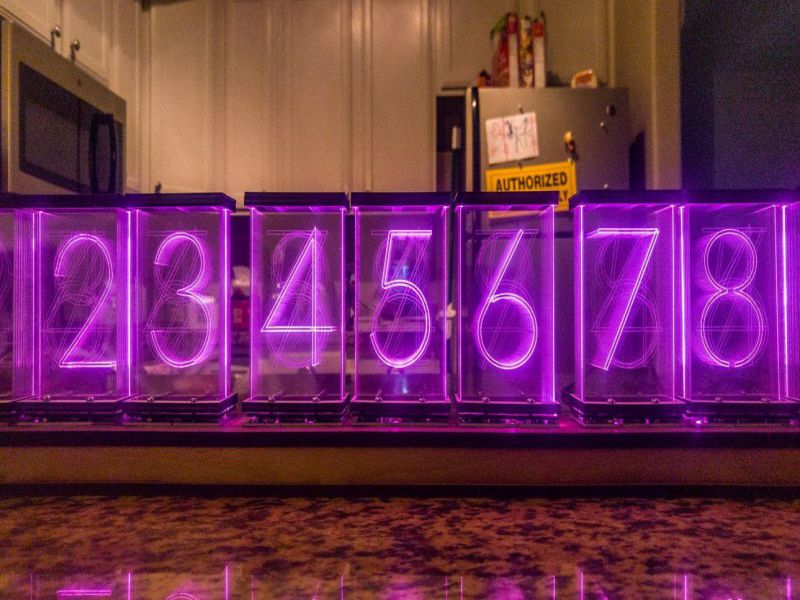Success is a journey, not a destination
Contents
Intorduction to the Lixie Tubes!
Lixie is an edge-lit acrylic display for any numeric information you can think of! Clocks, temperature displays, hit counters, and more. Always being a fan of the beautiful typography of a Nixie Tube, the Lixie is a modern spin!
The Lixie has extremely simple setup, just connect the 5V, GND, and DIN pads to an Arduino and use the Lixie library to write a digit to the display! That's it! No HV switching, PCB footprint, or worries!
Since the Lixie is just wired like a WS2812B strip, you can connect the DOUT pin of one to the next and show a number as long you'd like!
Below is the image showing a Single Number displayed on Lixie, and the internal structure of 10 acrylic sheets stacked together, PCB and footprints.

Why can LIXIE do?
A Modern Spin On A Retro Tech !
- Date / Time
- Temperature / Humidity
- Website Views
- Youtube Views
- Tindie Sales
- Or any number in any Arduino Project!
- They are compatible with ESP8266, Raspberry Pi and the entire family of Arduino Microcontroller
- Operate at low-voltage power Lixie is based on WS2812B LEDs, (or "Neopixels" Adafruit calls them) meaning it can display the following in any color:
A clock made of Lixie digits.

How does LIXIE work
Unlike the Nixie Tubes the Lixie is based on, setup and use is EXTREMELY easy. Just connect the 5V & GND pins to your Arduino's, and connect the "DIN" pin to any of your digital pins. From there, it's just a matter of including the Lixie library and simple functions!
Lixie is designed as a WS2812B strip, meaning you can chain as many of these together as your power supply can handle! There are 20 LEDS on each board, but when used normally only two will be on at a given time.
The library also does all the work pushing each digit of an integer out to it's own display, so that if you have 4 Lixies, calling lix.write(314) will show " 314" or "0314" on them!
How is LIXIE different
Low Voltage
While traditional Nixie Tube displays took a dangerous 170V power supply, Lixie runs on only 5 volts making it safe for children, pets, and new hobbyists! Connector.
Self Driving
Lixie is based on WS2812B LEDs, which means that they don’t need any specialized drivers – just a microcontroller! Connector.
Chainable
You can simply connect one digit to the next, and drive them all with the Lixie Arduino library!

Let's check out how the Lixie works !
What changes do I want to make in my Lixie Tube
- I want the Lixie to show different weather conditions by exhibiting different standard color like orange for sunny weather and show time also.
- Firstly, I will use Arduino libray, but I want to try the same stuff with Python also (If i got enough time and the Lixie doesn't do any mess up my mood )
The credit goes to Connor Nishijima who sells Lixie commercially.
Check out About me and other details here

This work is licensed under a Creative Commons Attribution-NonCommercial 4.0 International License.

